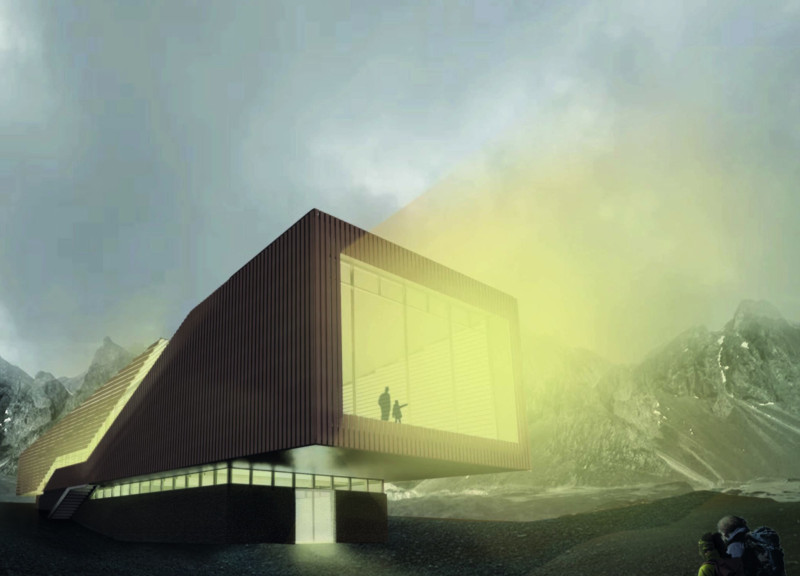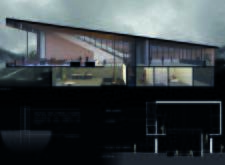5 key facts about this project
The Beacon of Hverfjall is located in the Myvatn region of Iceland, functioning as a visitor center that connects visitors with the surrounding volcanic landscape. The design melds the need for a restful space with an architectural vision that respects and responds to nature. Through its form and layout, the building fosters engagement with the environment while providing a welcoming area for reflection and relaxation.
Design Concept
The approach to the Beacon of Hverfjall centers on the idea of integrating the structure with its natural context. The building rises from the ashen ground, creating a visual relationship with the landscape. The arrangement of pathways inside and outside the structure supports a smooth flow for visitors, leading them from an intimate lounge to a bright café above. This movement reflects the physical journey of hiking Hverfjall volcano itself.
Materiality
Volcanic rock jamming serves as a key material in the structure, sourced from the nearby volcanic debris. This choice ties the building closely to its geological surroundings, offering a sense of authenticity rooted in the location. Using local materials helps the construction feel like a part of the environment rather than something imposed upon it.
Spatial Experience
Light is an important element of the building's design. It filters through the spaces, creating a calming effect that enhances the experience of being within the structure. This thoughtful use of natural light promotes an inviting atmosphere, making the interior feel warm while maintaining a connection to the outside. The interplay between light and shadow becomes a significant part of how visitors perceive the space.
Framing Views
Large windows throughout the center capture views of the Hverfjall crater. These openings encourage a connection with the landscape, enhancing the experience for those inside. The positioning of these windows enriches the sense of being in this unique location, allowing visitors to observe the changing weather and scenery outside.
The design concludes with a gentle play of light that dances across surfaces, offering a peaceful invitation for visitors to engage with both the architecture and the serene beauty of the falling snow outside.






















































